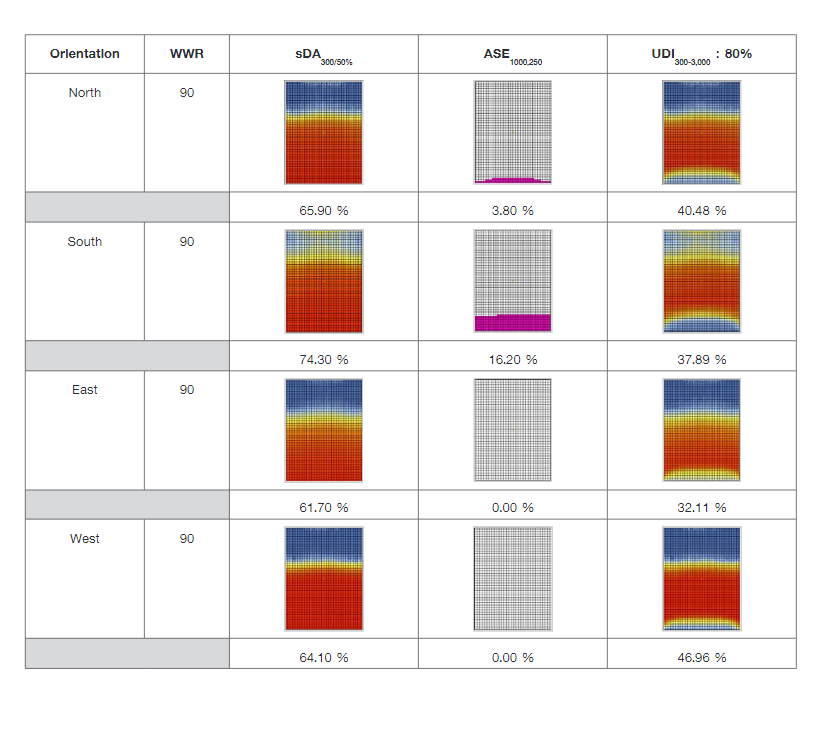Design Guidelines for Enhancing Daylight Performance in Office Building by Using Electrochromic Glass
Main Article Content
Abstract
The objectives of this research were to study the efficiency of daylight and energy consumption from electrochromic glass which can adjust to be either tint or transparency as well as the visible light transmission and solar heat gain coefficient. By studying the variable of window to wall ratio, building orientation and comparing with other types of glass. DIVA for Rhino was used for simulating and evaluating daylight performance. eQUEST 3.65 was used for analyzing energy consumption. The results showed that electrochromic glass was similar to other types of glass in transmitting daylight into the building when the status is transparent. Moreover, it can prevent glare when the glass turns into fully tinted stated. As a result, it will affect the reduction of heat transfer into the building as well. Furthermore, it can save electric energy in air conditioning and lighting systems including building energy consumption, especially in the east and the west by 25.80 and 28.86 percent respectively when compared with the use of green laminated glass. However, economic issue should be considered.
Downloads
Article Details

This work is licensed under a Creative Commons Attribution-NonCommercial-NoDerivatives 4.0 International License.
All material is licensed under the terms of the Creative Commons Attribution 4.0 International (CC-BY-NC-ND 4.0) License, unless otherwise stated. As such, authors are free to share, copy, and redistribute the material in any medium or format. The authors must give appropriate credit, provide a link to the license, and indicate if changes were made. The authors may do so in any reasonable manner, but not in any way that suggests the licensor endorses you or your use. The authors may not use the material for commercial purposes. If the authors remix, transform, or build upon the material, they may not distribute the modified material, unless permission is obtained from JARS. Final, accepted versions of the paper may be posted on third party repositories, provided appropriate acknowledgement to the original source is clearly noted.
References
Baetens, R., Jelle, P. B., & Gustavsen, A. (2010). Properties Requirements and Possibilities of Smart Windowsfor Dynamic Daylight and Solar Energy Control in Building: A state-of-the-art Review. Solar Energy, 94, 87-105.
Mardaljevic, J., Heschong, L., & Lee, E. S. (2009). Daylight Metrics and Energy Savings. Lighting Research and Technology 2009, (0), 1 - 23.
Mardaljevic J. (2017). Climate-Based Daylight Modelling. Retrived Jan 22, 2019, from http://climate-based-daylighting.com/doku.php?id=academic:climate-based-daylight-modelling
Na Songkhla, S. (2015). Energy Efficiency of Thermochromic (TC), Polymer-Dispersed Liquid Crystal (PDLC), and Low-E Glass Windows in Tropical Climate (Master’s Thesis). Faculty of Architecture, Chulalongkorn University.
Sbar, L. N., Podbelski, L., Yang, M. H., & Pease, B. (2012). Electrochromic Dynamic Windows for Office Buildings. International Journal of Sustainable Built Environment, 1, 125-139.


